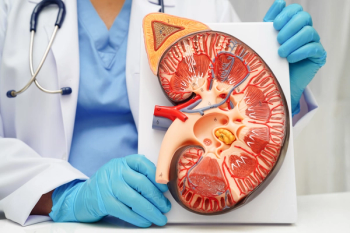
Hydrogen Peroxide, Hyperoxygenation, and Harms
The medical or intentional misuse of this common household agent can have serious consequences.
Hyperoxygenation
Proponents of “oxymedicine” claim that hyperoxygenation therapy is effective for various health ailments. These questionable and even dangerous assertions claim benefits for conditions as wide-ranging as migraines, candidemia, deafness, and multiple types of cancer. The treatment methods may entail oral ingestion and evenintravenous infusions.
A few of the purported premises of oxygen (O2) therapy include 'replenishing' O2 stores, restoring O2 ”balance”, and raising O2 pressures in the body.
As yet, however, little to no evidence exists to support these declarations. A PubMed search for “oxymedicine,” for example, yields only one result: an article discussing questionable methods of managing cancer.1 According to this article, the most utilized compounds for this practice are hydrogen peroxide, germanium sesquioxide, and ozone. The authors point to both legitimate research conducted involving these agents and the fact that study findings do not support these agents’ use for managing the aforementioned disease states.
Hydrogen Peroxide
Of the above agents mentioned for use in hyperoxygenation therapy, hydrogen peroxide is perhaps the most familiar and widely used in all respects. It is a well-known oxidizing agent and byproduct of cellular respiration. As a reactive oxygen species, it plays important immunologic roles and more recently has evidence to support its action as a signaling messenger.2
Aside from these physiologic functions in biological systems, hydrogen peroxide also has household and industrial uses. Colorless and easily mistaken for water when outside of its original bottle, it is sold in light-protective packaging that prevents decomposition of the compound. Hydrogen peroxide in lower concentrations (3% - 6%) is used as a disinfectant and for wound cleaning, while in higher concentrations (35% or higher) it’s used for industrial purposes.3,4 Concentrations upwards of 90% are found as components of rocket fuel.5
During accidental or intentional ingestion, this concentration is important to note, as each milliliter (mL) of 3% hydrogen peroxide yields 10 mL of oxygen gas. As each mL of 35% solution yields around 100 mLs, a 30 mL mouthful of 35% solution has the potential to liberate about 3000 mL of gas.3 When exposed to catalase, hydrogen peroxide decomposes into water and diatomic oxygen. The rapid decomposition into gaseous product can create wide pressure gradients and result in distention, rupture, and ultimately severe damage of internal organs.
Hydrogen peroxide exhibits its toxicity through other mechanisms, as well. In addition to corrosive properties causing local tissue damage, the lipid peroxidation that occurs further damages cell membranes and is directly cytotoxic.4 Furthermore, the aforementioned generation of gas can result in formation of gas emboli and result in serious consequences. When maximum solubility is reached, an embolus can form and travel to the brain, which can cause a cerebral infarction.
Presentation
Patients may present with numerous signs of toxicity.4 In addition to the previously mentioned distension and rupture, ingestion can cause irritation, vomiting, and foaming that can obstruct the airway. Airway and lung exposure can lead to coughing, dyspnea, and respiratory distress. Patients may also progress into sinus tachycardia, seizures, and coma among many other presentations of injury.
Children may be more vulnerable to toxic effects as they have relatively larger skin, mucosal, and lung surface area per unit of body weight.6
The Medical Management Guidelines for Hydrogen Peroxide provided by the Agency for Toxic Substances and Disease Registry is a useful resource for the properties, presentation, response, and management of hydrogen peroxide ingestion or exposure.
References
- Questionable methods of cancer management: hydrogen peroxide and other “hyperoxygenation” therapies. CA Cancer J Clin. 1993 Jan-Feb;43(1):47-56.
- Stone JR, Yang S. Hydrogen peroxide: a signaling messenger. Antioxid Redox Signal. 2006 Mar-Apr;8(3-4):243-70.
- Manning EP, Laskowski LK, Nelson LS, Touger M. Ingestion of 35% Hydrogen Peroxide. Ann Emerg Med. 2014 Sep; 64(3): 330—333.
- Watt BE, Proudfoot AT, Vale JA. Hydrogen peroxide poisoning. Toxicol Rev. 2004;23(1):51-7.
- Pritchett S, Green D, Rossos P. Accidental ingestion of 35% hydrogen peroxide. Can J Gastroenterol. 2007 Oct; 21(10): 665—667.
- Medical Management Guidelines for Hydrogen Peroxide (H2O2). Managing Hazardous Materials Incidents. Agency for Toxic Substances and Disease Registry. www.atsdr.cdc.gov/MHMI/mmg174.pdf. Accessed 15 January 2018.
Newsletter
Stay informed on drug updates, treatment guidelines, and pharmacy practice trends—subscribe to Pharmacy Times for weekly clinical insights.
















































































































































































































